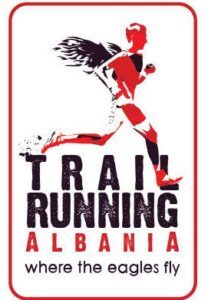A beginners guide to Trail Runnig
A Beginner’s Guide to Trail Running
Trail running satisfies a primal need for movement through nature, presumably left over from our days as hunters. When things spin out of control in an age of iPads and Droids, running in the woods is one thing we can count on to be pretty much the same as it’s always been.
That’s your fancy explanation. My real reason for trail running? Getting dirty makes me feel way more badass than I am.
So what does the average road runner have to gain from venturing out into the wilderness?
Two things. First, reduced risk of injury: The soft, ever-varying surface of the trail lessens the likelihood of an overuse injury, strengthens core muscles, and ultimately makes for more comfortable long runs than asphalt. Second, a rush that road running just can’t give you. It should come as no surprise that soaking in the essence of the forest results in a quantifiably-greater endorphin release than does breathing in roadside fumes.
Here’s what you need to know to hit the trails safely and discover this wildly soothing side of running.
Trail Running Gear
At its best, trail running is a more minimalistic endeavor than road running. While iPods, GPS devices, and heart rate monitors have become musts for many runners, technology tends to take away from experience of trail running.
Still, there are certain necessities for trail running, some of which require different considerations from running on roads.
- Clothing:The same technical apparel that you wear on roads works for trails, but choose something that you don’t mind getting dirty or snagged.
- Shoes: If you decide to stick with trail running you’ll eventually want to get a pair of trail shoes. They offer a stronger, protective sole and greater stability than most road shoes.
- Water bottle:If you’re not big on drinking from streams, you’re going to have to carry your water with you. A favorite among trail runners is the handheld water bottle that straps to the hand and has additional pouches for things like keys, ID, and food. For longer runs, consider a hydration vest
- Insect repellent: Depending on where you’re running, bug spray may or may not be necessary.
And don’t forget a towel and a change of clothes, socks, and shoes for afterward. If you’re doing it right, you’ll be wet and dirty by the end of the run.
7 Steps to Your First Trail Run
- Find a trail.
Running Albania’s website offers a diversity of trail all over the year.
- Slow down and take short, quick strides.
You can expect to run about 20 percent slower on trails for a given level of exertion than you would on roads. You’ll find steeper hills, more side-to-side movement, and lots of obstacles to deal with. Trail running is most fun when you forget about pace and do what feels good.
Shorten your stride so that your weight is over your feet most of the time; this allows you to react quickly and maintain balance. You’ll find that trail running works your core and stabilizer muscles more than road running, so it may help to focus on keeping your core engaged.
- Don’t be afraid to walk the hills.
The surest way to identify a road runner on the trails is to look for the guy who runs past everybody on the uphills, only to be passed again on the downhills. Trail runners know that it’s usually more efficient to walk up the steep hills and conserve energy to make up time on the way down.
- Scan the ground five to 5 meters in front of you as you run.
When you’re running trails, you need to pay extra attention to where you step. But you certainly don’t want to be staring straight down at your feet the whole time.
Continuously scan the ground a few meters ahead of you while you’re running. As you notice an approaching obstacle, shift your attention to your feet to do whatever is necessary to clear the obstacle. And don’t be lazy—pick up your feet just a little higher than you think is necessary to avoid a root or rock. Too many falls happen due to simple complacency.
- Keep a distance of ten feet from other runners.
If you’re going to pay attention the ground in front of you, it helps if you can actually see it. If that’s not enough reason to keep your distance, trail runners are required to change speeds all the time, rarely with warning. Nobody likes getting rear-ended.
- Watch out for slippery roots and rocks.
If you can step over a fallen tree, root, or large rock, rather than on it, do it. Lots of them are more slippery than they look. And when crossing streams, it’s often safer to walk directly through the water than to try to tiptoe across wet rocks. (You’ll avoid being called names, too.) It’s trail running; you’re supposed to get muddy and wet!
- Be safe. It’s not called “the wild” for nothing.
You know, the common-sense stuff. Whenever possible, run with a friend. Bring a map if you’re running a new trail for the first time. Have a first aid kit in the car, and carry extra food with you for emergencies.
And know the area you’re running—how to deal with the wildlife, when and where hunting takes place, when the sun goes down, and anything else that might pose a danger.
Happy Running
Trail Running Albania
